Adapted from BORN TO BE WILD
Produced for web by MARISSE PANALIGAN and JESSICA BARTOLOME
GMA News
February 18, 2019
Remember that scene in Finding Nemo when Marlin and Dory were trying to figure out how to get to Sydney?
The two of them ran into a school of fish that started to do “impressions” of bigger sea creatures using their coordinated movements. The school turned into a swordfish, a lobster, and an octopus. They also mimicked the shape of a warship and even Marlin himself!
A similar phenomenon happens in real life, and it can be witnessed by taking a dive in the waters of Moalboal, Cebu. Just three meters below the surface at Panagsama Beach, a massive school of fish has become a huge tourist attraction — the so-called “Sardine Run.”
They couldn’t quite form more complicated figures like in the movie, but the sardines are still majestic to witness. They are nature’s version of a field demonstration dance. Each sardine looks ordinary compared other species of fish, but together, they create a work of art as they swim in perfect harmony.
“Talagang nakakamangha. Isipin mo that they are capable of thinking and moving in such a very intelligent manner,” says Doc Ferds Recio, the host of Born to be Wild. “If you startle this group of fish here, lahat sila gagalaw to move away so ganun sila ka-synchronize ang movement with each other.”
A sardine is probably not the typical tourist’s idea of dazzling creatures that can be seen underwater.
Think for example of a clownfish, the title character in Finding Nemo, which easily grabs attention due to its orange color and black and white stripes. The sidekick in the animated classic is a regal tang, another pretty species with a nice blue body and yellow fins. Next to these, the sardine is a plain jane; if the fish were competing in a pageant, you would not like its odds of reaching the final question and answer portion.
Thankfully, they are not competing in a pageant.
Other fish have to be seen individually in order to fully appreciate the little details of their appearance, their true beauty masked when they come together. The allure of the sardine, however, is the opposite, as its true beauty is revealed when it shows up in great numbers.
“Habang nakikita mo sila may makikita kang silver nagiging black, nagiging gray. It's changing colors kasi tinatamaan na sila ng araw e, makikita mo 'yung hitsura nila nag-iiba rin,” says Doc Ferds, who went to Cebu to check out the famous Sardine Run.
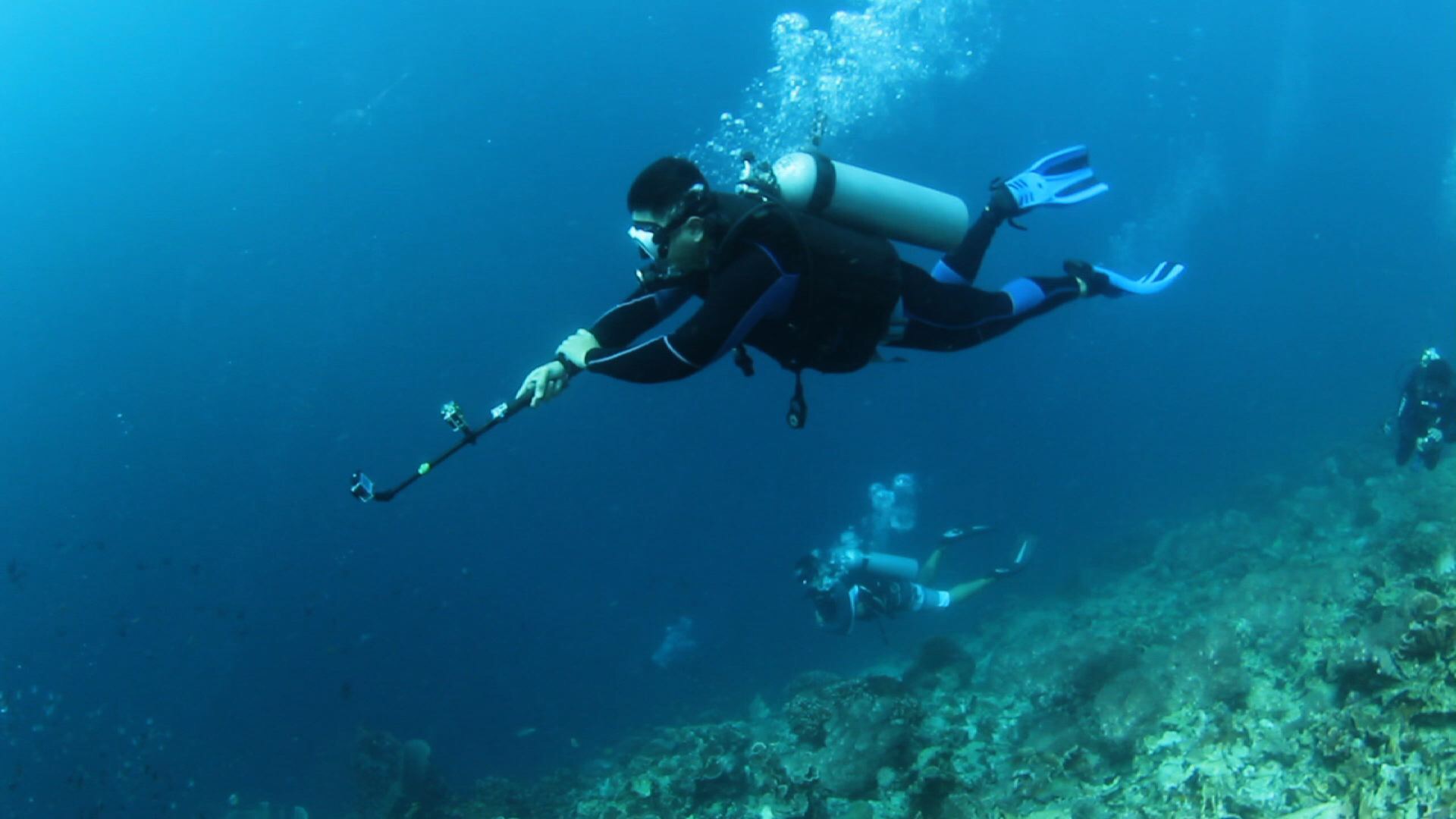
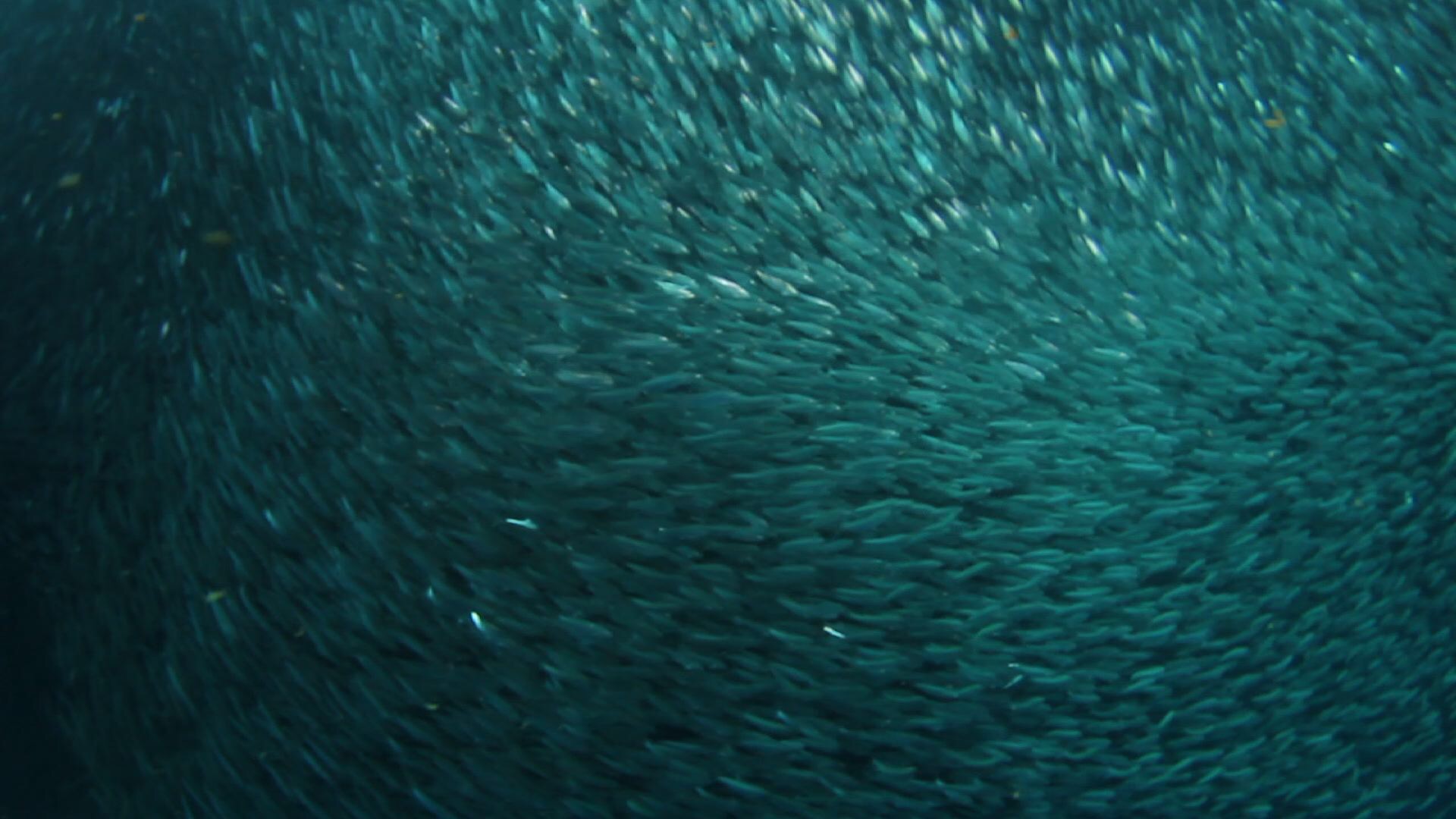
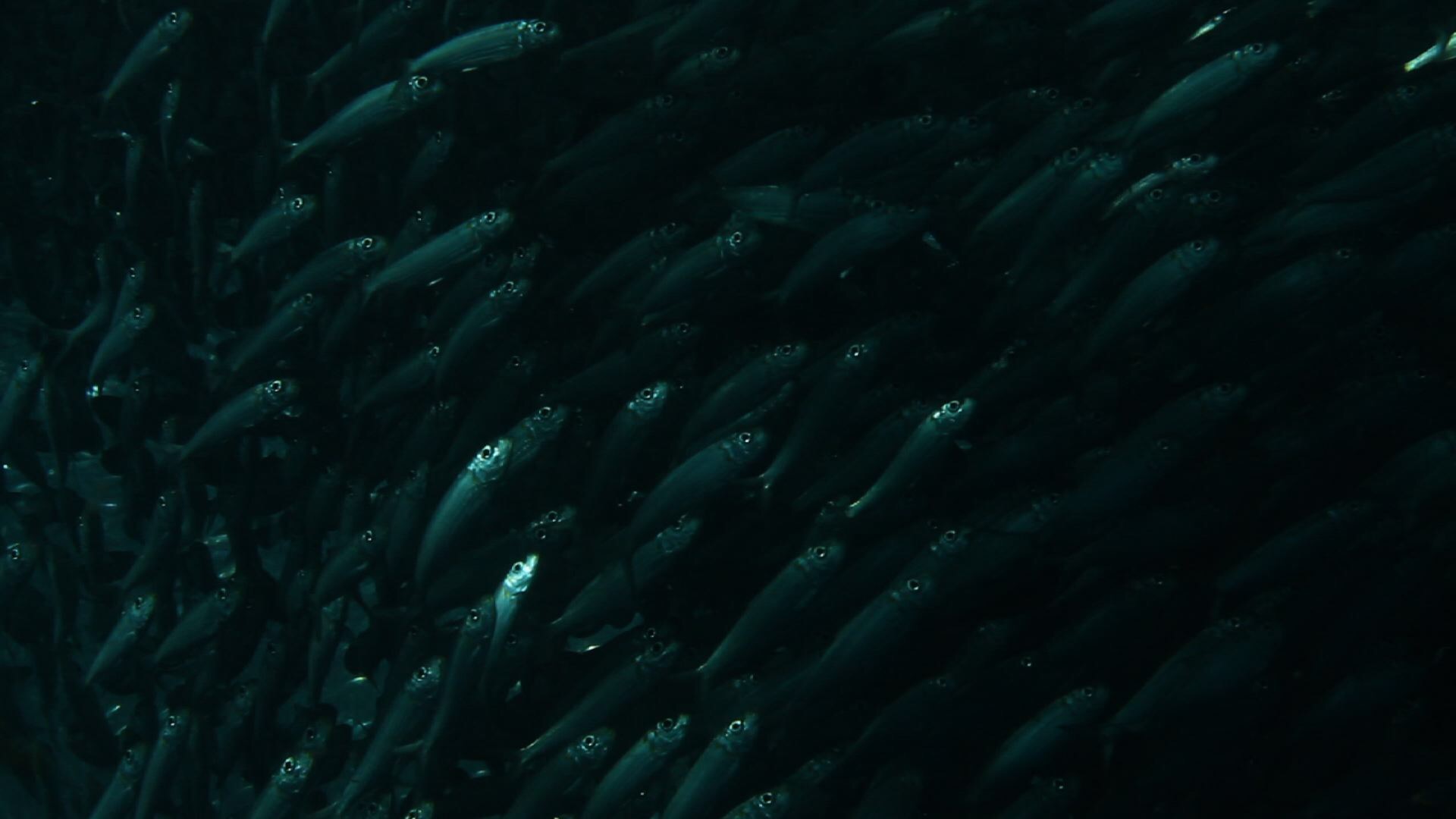
The sardines used to stay in Panagsama Beach when they first arrived in Moalboal years ago. However, they disappeared after some time because the fishermen kept catching them in nets.
They later showed up in nearby Pescador Island, where the crew of Born to be Wild filmed them in 2012. When Doc Ferns went to Pescador this year, the sardines were already gone and all he saw were coral reefs. He learned that the fish have gone back to Panagsama Beach, where they are now allowed to roam freely in the waters.
“Gumawa tayo ng batas para protektahan sila, para hindi na sila lambatin,” says Nelson Avenido, a former vice mayor who now works with the Moalboal Resort and Dive Operator Association, “Ngayon ito na 'yung highlight ng Moalboal. Dumami na 'yung mga turista, maraming divers na nagpupunta dito para lang makita ang mga sardines.”
About 600 tourists arrive in Moalboal every day to see the Sardine Run. As of now, the local government is still considering whether they will impose a limit on the number of tourists who can visit the town.
“This year they will be conducting the current capacity research, to determine how many tourists can be allowed without sacrificing the biology, ecology of the sardines run,” says Romel Quirit, program implementation manager of RARE Philippines, a non-government organization working on natural conservation.
Sardines are migratory fish that move from one place to another depending on the food supply and the temperature. Despite this, they can now be seen the whole year round in Moalboal for the past six years.
“They stayed for a long time. I should say they lost the migratory character,” Quirit says. “That could be the good indication that your conservation program is doing well, you're enforcing your resource management activities.”
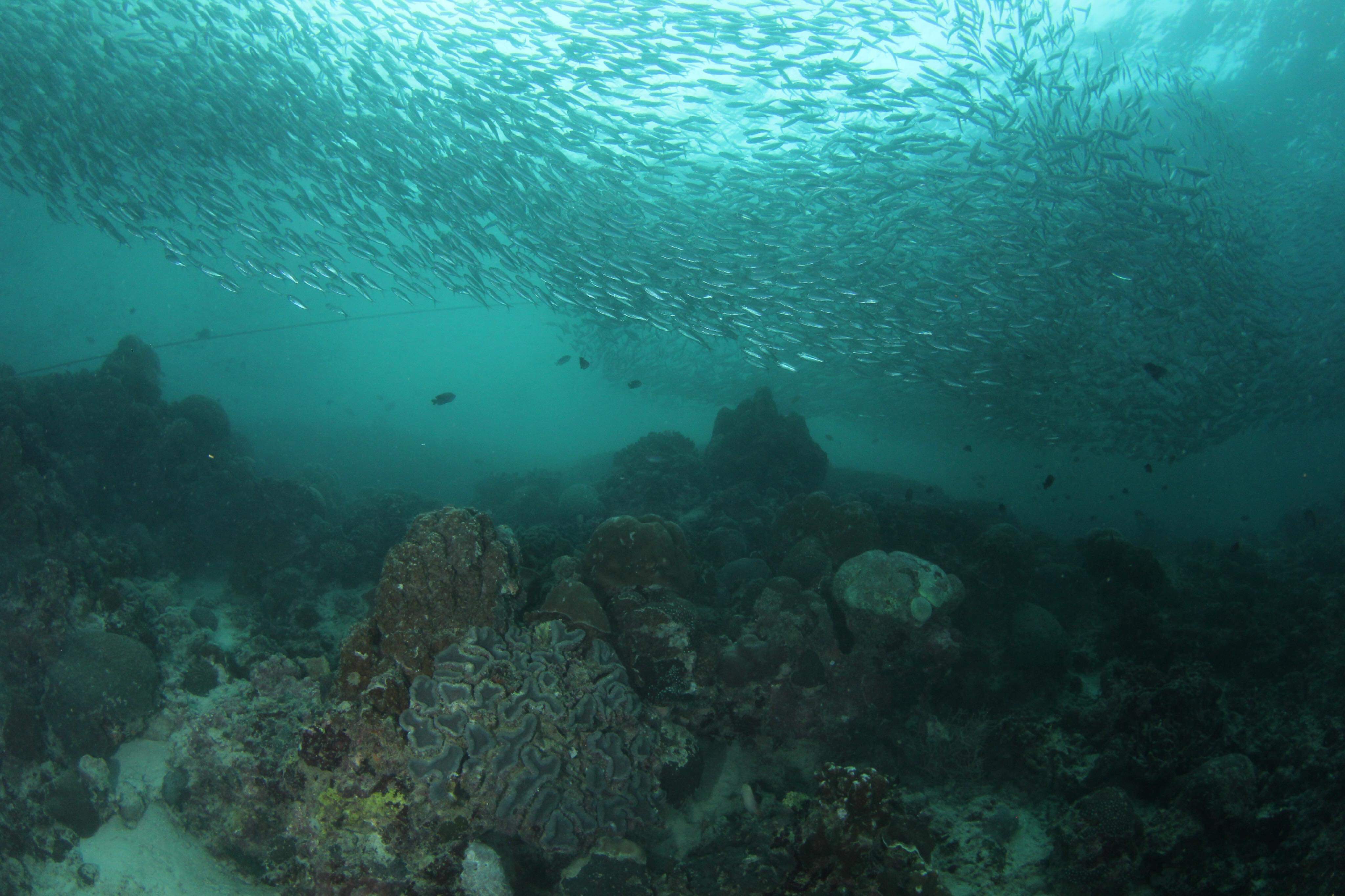
Aside from tourists, other sea creatures are attracted by the Sardine Run.
“Sa paglangoy-langoy namin at pagsisid namin dito sa Moalboal may nakita rin kaming pawikan. They are equally enjoying the same area kung saan nandito itong mga sardines na sinabayan natin,” Doc Ferds says.
Sea turtles do not eat fish. They only swim with the sardines in order to avoid predators. The sardines themselves stay together for the same reason — safety in numbers. A lone small fish swimming in the sea can easily become a meal for a shark, but it is more likely to survive when it swims with many other fish.
This safety mechanism is what gave birth to the Sardine Run. Nature is amazing, isn’t it?
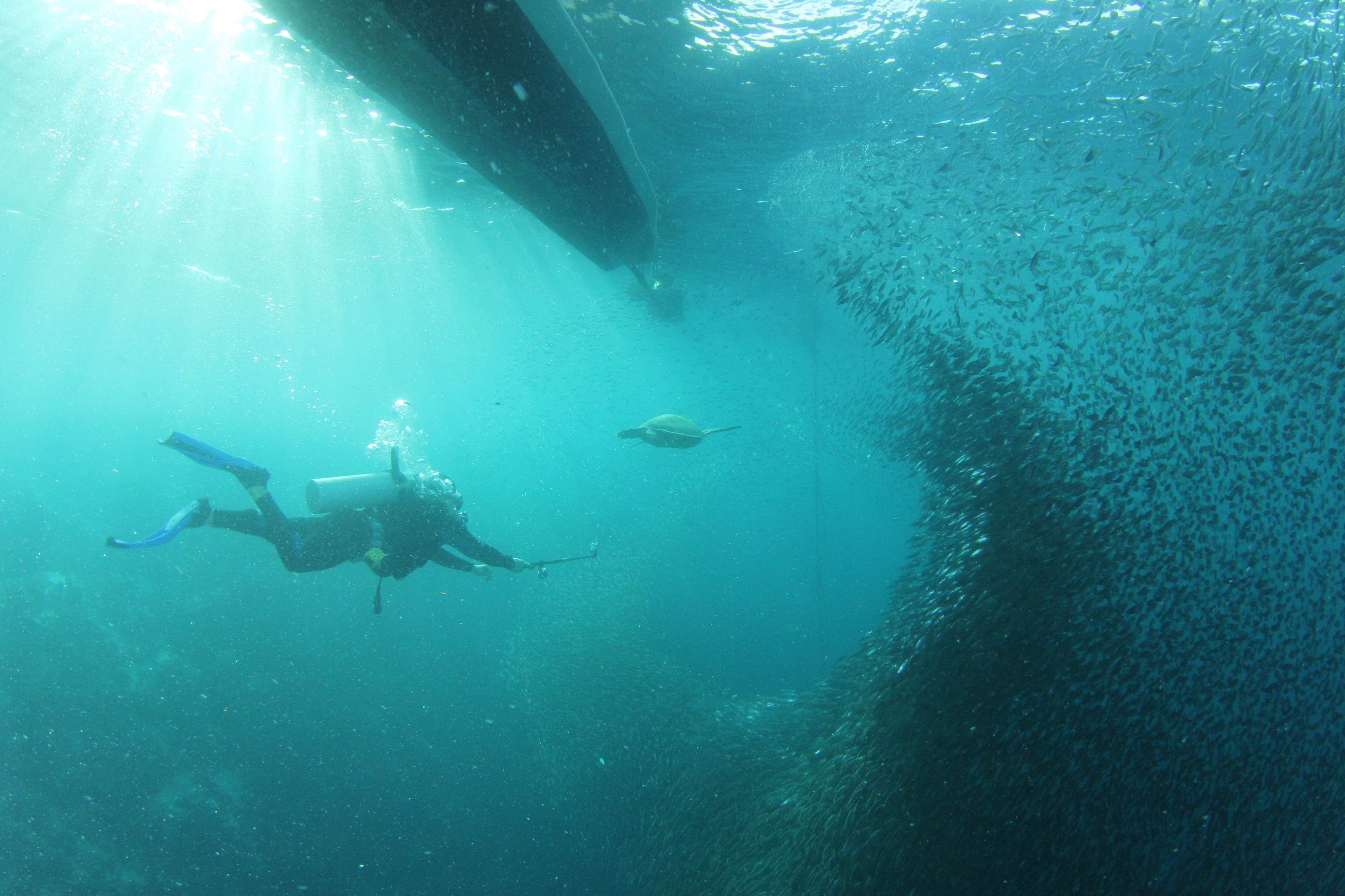

At one point, the sardines formed a wall parallel to the sea wall itself, leaving a narrow gap. Doc Ferds swam in between, fully appreciating the “tactile experience.”
“Talagang kikilabutan ka sa nakikita mo,” he said. “We were like passing through in between two walls.”
The Born to the Wild host says the challenge now is to figure out how to avoid disturbing the sardines in order to maintain their stay in Moalboal and let the town benefit the rewards for the presence.
“They have this unified action to the activities around them and if they become affected in the future for whatever reason, they will choose to go away and choose to transfer to another location,” he says.
“We have to understand the sardines more why they are here.”
In-depth special reports and features showcasing the best multimedia storytelling from GMA Integrated News.
SHARE THIS STORY